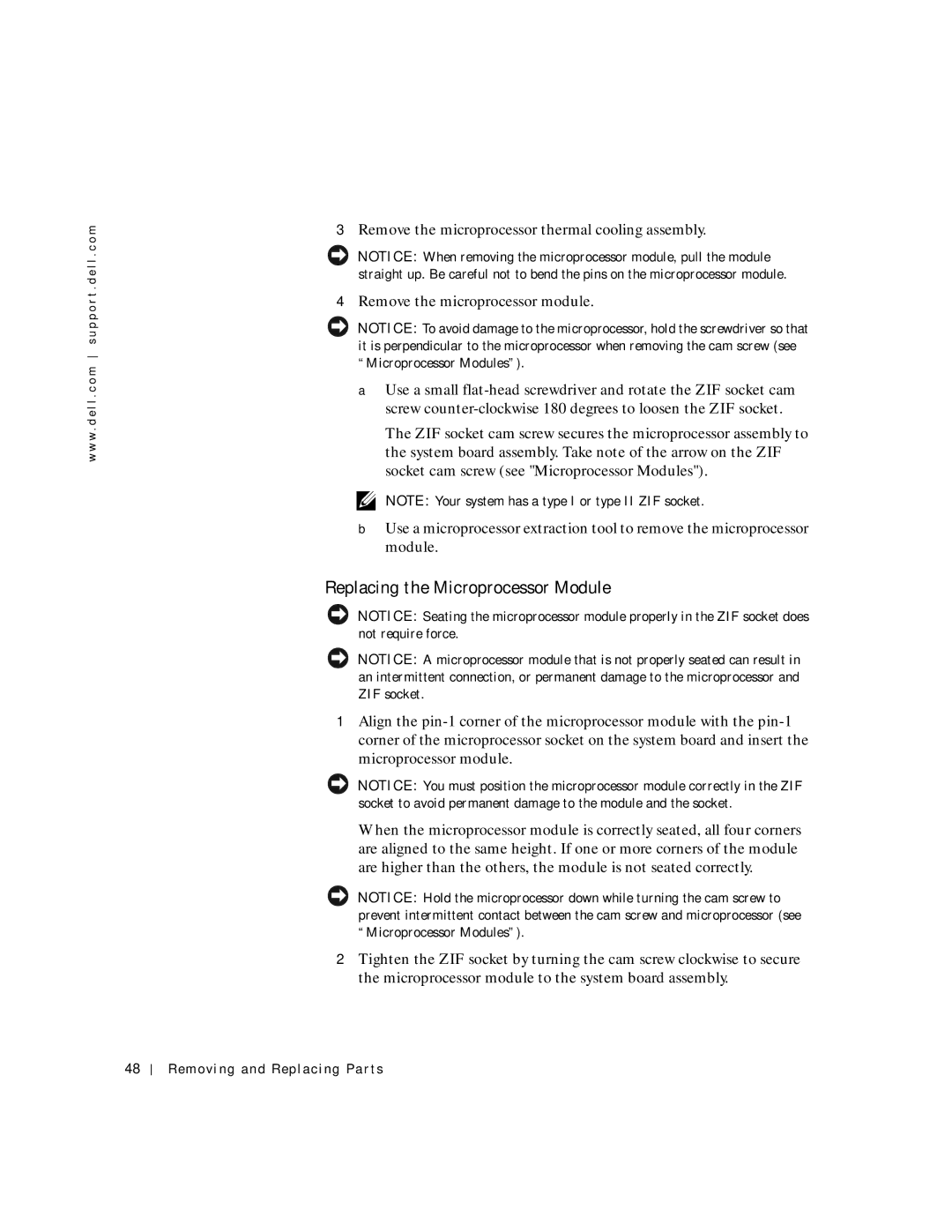
w w w . d e l l . c o m s u p p o r t . d e l l . c o m
3Remove the microprocessor thermal cooling assembly.
NOTICE: When removing the microprocessor module, pull the module straight up. Be careful not to bend the pins on the microprocessor module.
4Remove the microprocessor module.
NOTICE: To avoid damage to the microprocessor, hold the screwdriver so that it is perpendicular to the microprocessor when removing the cam screw (see “Microprocessor Modules”).
aUse a small
The ZIF socket cam screw secures the microprocessor assembly to the system board assembly. Take note of the arrow on the ZIF socket cam screw (see "Microprocessor Modules").
NOTE: Your system has a type I or type II ZIF socket.
bUse a microprocessor extraction tool to remove the microprocessor module.
Replacing the Microprocessor Module
NOTICE: Seating the microprocessor module properly in the ZIF socket does not require force.
NOTICE: A microprocessor module that is not properly seated can result in an intermittent connection, or permanent damage to the microprocessor and ZIF socket.
1Align the
NOTICE: You must position the microprocessor module correctly in the ZIF socket to avoid permanent damage to the module and the socket.
When the microprocessor module is correctly seated, all four corners are aligned to the same height. If one or more corners of the module are higher than the others, the module is not seated correctly.
NOTICE: Hold the microprocessor down while turning the cam screw to prevent intermittent contact between the cam screw and microprocessor (see “Microprocessor Modules”).
2Tighten the ZIF socket by turning the cam screw clockwise to secure the microprocessor module to the system board assembly.
48
